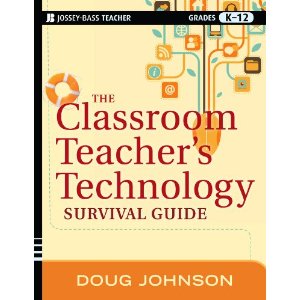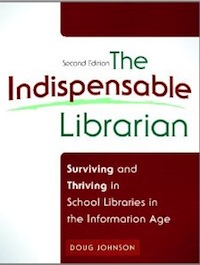Zero-sum budgets and technology
Zero-sum budgets and technology
Interactive Educator, Winter 2006
Zero-sum describes a situation in which a participant’s gain or loss is exactly balanced by the losses or gains of the other participant(s). Wikipedia
David Lewis’s pithy article, “Eight Truths for Middle Managers in Lean Times” (Library Journal, Sept. 1991) had a major impact on the way I approach budgeting. His first “Truth” is as applicable now as then: “It is a zero sum game.” About public library budgets, he explains: “There is no more money…The important truth is that those who provide the cash…will not give the library any more. They can’t because they don’t have it.”
Schools, too, seem to have reached a level of funding that is unlikely to substantially increase (if not decrease) given today’s anti-tax climate. School boards and administrators may sincerely want to provide more for technology, but “they don’t have it.”
Does this mean no additional funds for your technology program? Not necessarily. Mr. Lewis suggests a way that middle managers (like technology coordinators) can get more money for their programs: “You can take it away from somebody else. If you believe in what you are doing, you have an obligation to try this.”
Fighting for an adequate budget isn’t much fun. Want to make an enemy? Threaten the funding of a program that is owned by another educator. How many teachers when looking at a lab of shiny new computers think, “Is THIS how the funds to reduce class size were spent?”
Here are a few budgeting strategies for zero-sum climates:
Write outcome-driven budgets that support curricular and school improvement goals.
Budget types can basically be divided into two groups - those that are arbitrarily created and those that are outcome driven. How does budgeting work in your school? Are you given a sum of money and then told to make the most of it or are you developing an effective program and then asking for the money to support it?
Get out your spreadsheets and clearly show decision-makers how much money your program requires to be effective. How can anyone give you what you want if you yourself can’t determine it or communicate it?
Program-driven budgets have three major components:
- goals - this is the effect my funded program will have on student learning. Relate your budget to district or building long-range plans
- specificity - this is how much money I need, and this is exactly how I will spend it
- assessment - this is how I tell you if the funding for my program helped meet its goals
Communicate information about standards and studies, but build a budget based on the specific needs of your individual curricula, students, and teachers. Mrs. Green’s science students needing more current and varied resources for their solar system unit will carry more weight than any state or national standard.
Describe the “consequences” of an under-funded budget in concrete terms, framed by its impact on technology users.
We need to make the case that inadequate technology funding will have a negative impact on school programs, the classroom curriculum, and student achievement. In other words, what will happen to kids and teachers.
This is easier to do if your budget proposals are specific and goal-driven. Budget decisionmakers hear:
- I won’t be able to purchase the online database the teachers requested to support the revised 9th grade history class.
- Teachers will only get one toner cartridge for their printers this year instead of two.
- Only four students will be able to use the research terminals in the library at a time.
- The current bandwidth will not allow the school to administer the state’s online tests.
You need to use your very best interpersonal skills to make sure these predicted outcomes don’t simply sound like threats.
Give budget decision-makers the entire budget and be open to their ideas about how to economize.
Help others understand “maintenance” as it applies to technology.
Administrators “get” maintenance. They regularly budget for replacing roofs, tuck-pointing brickwork, and resurfacing parking lots. What these fine folks don’t always understand is that instructional technology must be regularly maintained as well. Use the following formula on your equipment, share the results with your budget people, and see if it makes a difference.
Here’s the formula: Maintenance budget = replacement rate X total number of items X average cost
(replacement rate = 100%/number of years in the life span of equipment)
For example, if a school has 100 student computers that cost $800 each and have a life span of 5 years, the maintenance budget for student computers should be 20% X 100 X $800 or $16,000.
Every year or the technology will get worse.
Use an advisory committee to build budget support.
Form an advisory committee if you don’t already have one. It can be a great help for the technology coordinator. My advisory committees have given me terrific ideas, huge challenges, and timely warnings over the years.
In all but the largest schools, there is rarely more than a single tech coordinator. An advisory committee is one way of giving ownership of the technology program to a body of stakeholders in the building. If the goals, the budget, the assessments, the long-range plan are known to be important to more than just a single person, they will carry more weight. And if your advisory group includes parents, community members and students, it will be a very important body indeed.
Serve in school and professional leadership roles.
At the school level, volunteer or run for governing committees. I am always shocked by how few individuals in an organization want to be decision-makers. Serving on these bodies always takes extra time. But hey, one learns to love those 7:00 am meetings.
Make a list of groups who make decisions in your school and district: site councils, curriculum committees, staff development committees, parent-teacher organizations, etc.. Attend. If you have a chance to have your voice heard and don’t, you’ve lost all your whining rights..
Nearly all state and national associations with educational affiliations have legislative platforms – get involved. Join ISTE who speaks for technology folks at a national level.
Folks, we’d better all believe deep in our hearts what we are doing is in the very best interest of our students and community, that spending what is necessary for a technology is better than buying new textbooks or violins or smaller class sizes. Operating in a zero-sum budget environment, you need both a thick skin and a deep-felt mission. Without them, you’ll get eaten alive; with them, you can accomplish anything.





Reader Comments